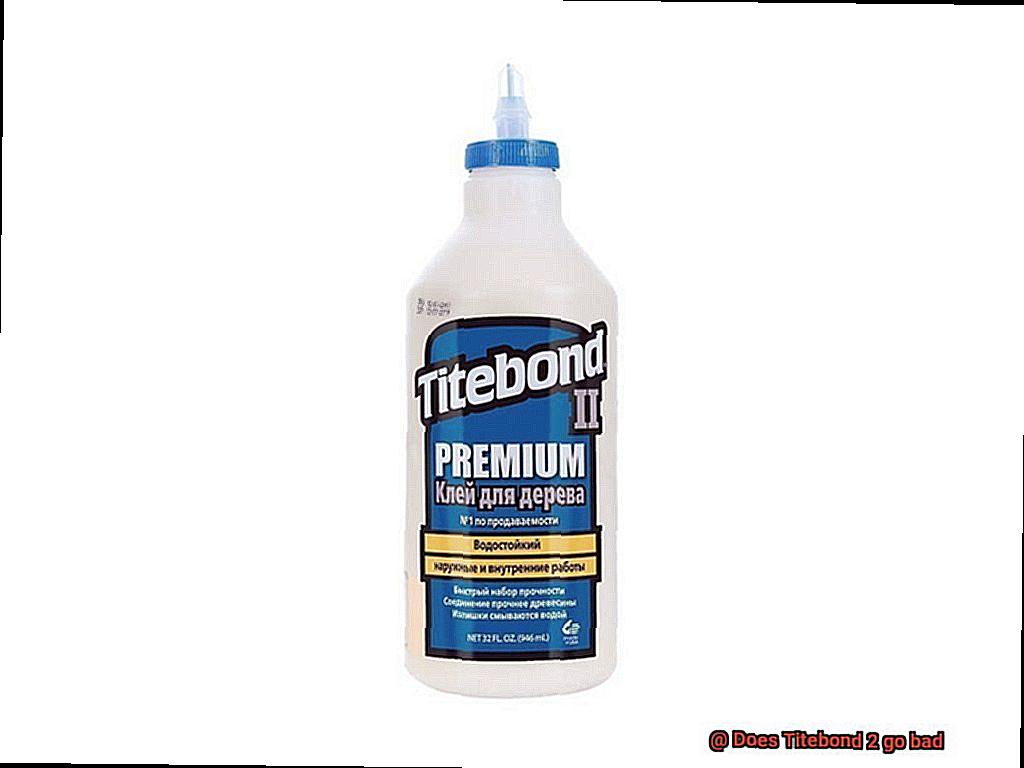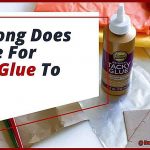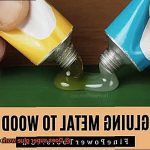Woodworking and carpentry are crafts that require steadfast adhesives to bring projects to life. Enter Titebond 2, the glue known for its Herculean bond strength and unwavering durability. But here’s the million-dollar question: can Titebond 2 go bad?
Whether you’re a seasoned pro or a DIY enthusiast, it’s crucial to understand the factors that can impact the lifespan of this adhesive. In this blog post, we’ll embark on a journey to unravel the mysteries surrounding the shelf life of Titebond We’ll dive into storage conditions, age, and even explore how exposure to air and moisture can potentially chip away at its effectiveness.
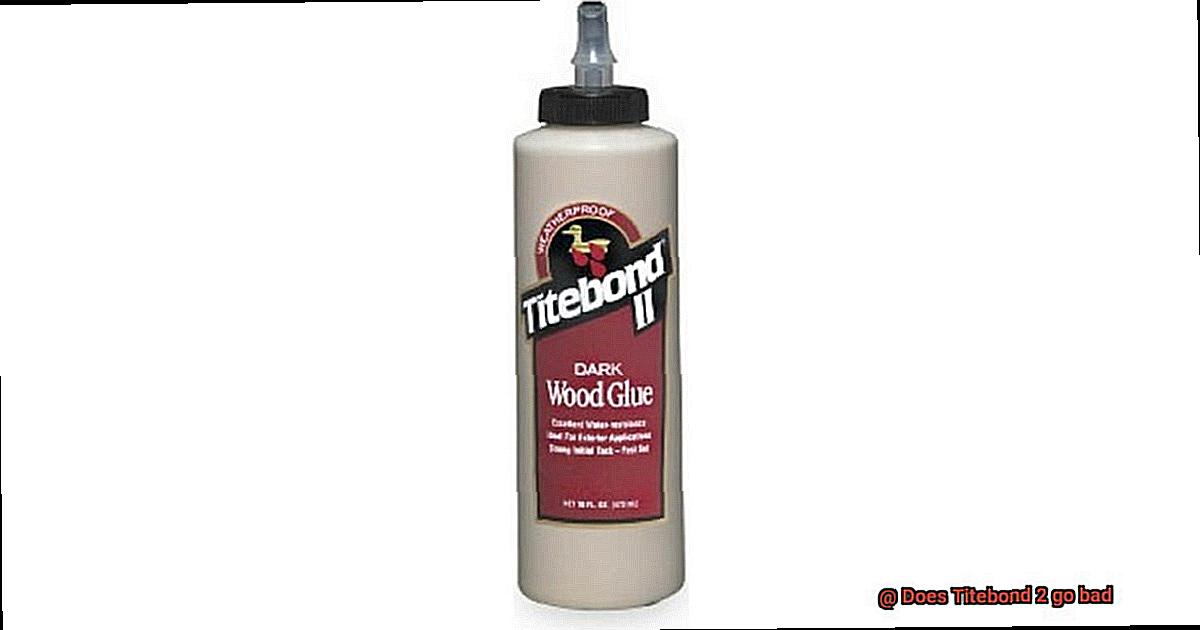
So grab your tool belt and join us as we decipher the secrets behind maximizing the longevity of your trusty woodworking companion. By the end, you’ll possess all the knowledge needed to ensure your projects stand strong for years to come.
Prepare yourself for an enlightening exploration into whether Titebond 2 can withstand the test of time. Let’s get started.
How Long Does Titebond 2 Last?
Contents
- 1 How Long Does Titebond 2 Last?
- 2 Signs of Expired Titebond 2
- 3 Factors That Affect Shelf Life
- 4 Proper Storage Tips for Titebond 2
- 4.1 Does Titebond 2 go bad?
- 4.2 The importance of proper storage
- 4.3 Seal the deal: After using your Titebond 2, make sure to tightly seal the container. This prevents air from getting in and moisture from escaping. You want to keep the glue’s viscosity and adhesion properties top-notch. If the original container gets damaged, consider transferring the glue to an airtight one.
- 5 Benefits of Using Fresh Glue
- 6 Troubleshooting Common Problems with Expired Glue
- 7 How to Dispose of Expired Glue
- 7.1 Understanding the Signs of Expired Glue:
- 7.2 Proper Disposal Methods:
- 7.3 If no specific instructions are available, fear not. You can still dispose of it easily. The first step is to let the glue dry out completely. Remove the cap and leave it exposed to air for a few days or weeks, depending on the quantity. Once dry and solid, you can safely throw it away with your regular trash. Remember to seal it in a bag or container to prevent any messy mishaps.
- 7.4 Recycling or Donation Options:
- 8 Alternatives to Titebond 2
- 9 Conclusion
To make the most of this adhesive product and avoid disappointment, it’s crucial to understand its shelf life. In this article, we’ll delve into the details and answer the burning question – how long does Titebond 2 last?
The Shelf Life of Titebond 2:
Titebond 2 boasts a commendable shelf life, particularly when stored and handled correctly. When unopened and kept in a cool, dry place, Titebond 2 can maintain its effectiveness for up to two years from the date of manufacture. This is excellent news for those who like to stock up on supplies or engage in occasional woodworking projects.
Effects of Opening the Bottle:
Cracking open that bottle of Titebond 2 reduces its shelf life. Exposure to air causes the glue to thicken over time, rendering it less effective for bonding wood surfaces. To combat this, always remember to tightly seal the bottle after each use, minimizing air exposure and prolonging the glue’s lifespan.
Using Within One Year:
To ensure optimal performance, it is recommended to use Titebond 2 within one year of opening the bottle. However, if the glue has been appropriately stored and displays no signs of thickening or hardening, it may still be usable even beyond the one-year mark. Regularly inspecting the glue’s consistency and color is crucial to determine its viability.
Temperature Considerations:
Extreme temperatures can also impact Titebond 2’s shelf life. Exposing the glue to excessive heat or cold accelerates degradation. Thus, it is best to store Titebond 2 in a temperature-controlled environment, away from direct sunlight or freezing conditions. By doing so, you can maintain its effectiveness and extend its lifespan.
Signs of a Bad Batch:
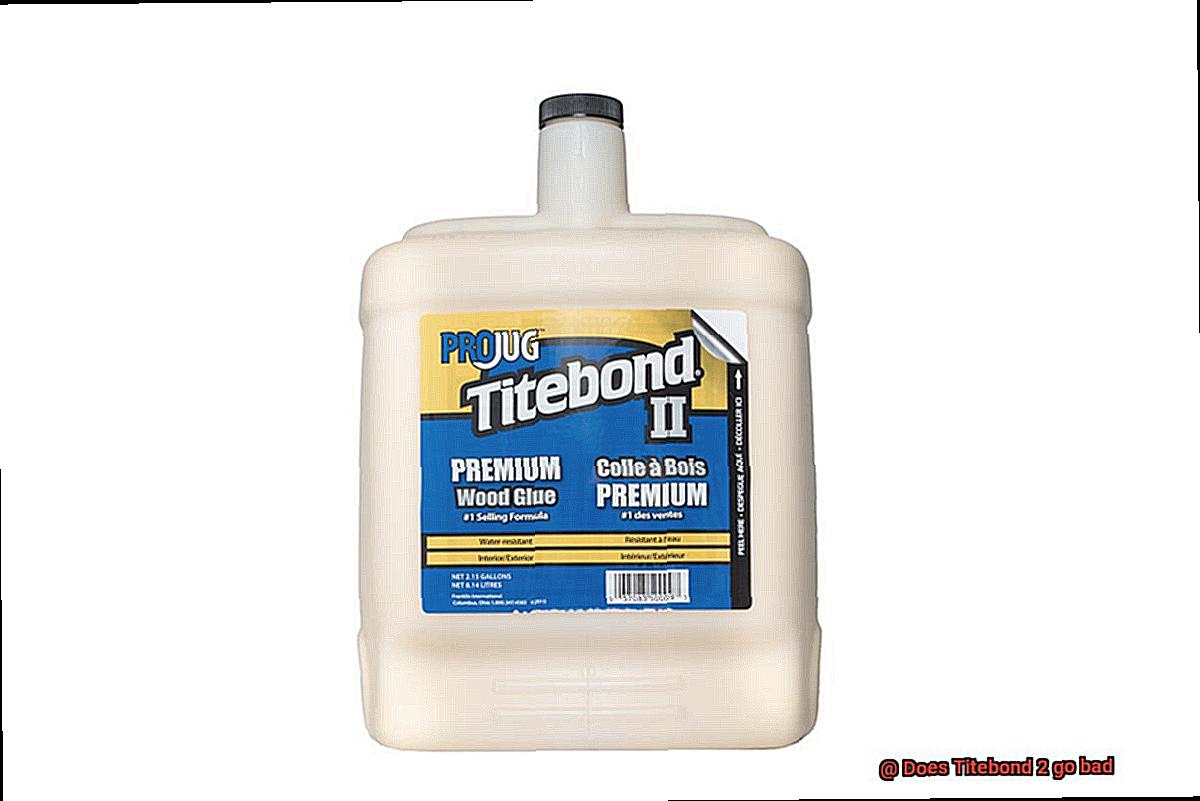
To discern whether your Titebond 2 has gone bad, pay close attention to changes in consistency and color. If the glue appears thick, lumpy, or discolored, it is likely that it has expired and should not be used for bonding purposes. Another telltale sign is a foul odor – fresh Titebond 2 emits a mild, slightly sweet smell. If it smells sour or rancid, it’s time to dispose of it.
Signs of Expired Titebond 2
As a skilled woodworker or carpenter, you understand the significance of using dependable and effective adhesives for your projects. Titebond 2 has long been a trusted name in the industry, celebrated for its impressive bonding properties and enduring strength. However, even the finest glue has its limits. In this comprehensive guide, we will explore the telltale signs that indicate your cherished bottle of Titebond 2 may have expired, ensuring that you always rely on fresh and potent glue for your woodworking needs.
Change in Consistency:
One of the primary indicators that Titebond 2 has expired is a noticeable change in its consistency. Fresh Titebond 2 boasts a velvety, creamy texture that effortlessly glides onto surfaces. However, as time passes, the adhesive may thicken or become clumpy, rendering it challenging to work with. If you find yourself grappling with lumpy or stubbornly viscous glue, it’s high time to consider acquiring a pristine bottle.
Unpleasant Odor:
Another unmistakable sign of expired Titebond 2 is a shift in its aroma. A fresh bottle of Titebond 2 emanates a mild, faintly sweet scent that is far from off-putting. However, if you detect a sour or rancid odor wafting from your glue container, it’s an unequivocal indication that the adhesive has begun to deteriorate and is no longer effective. Trust your olfactory senses and rest assured that fresher glue will yield superior results.
Poor Bonding Performance:
The fundamental purpose of using Titebond 2 is to achieve sturdy and reliable bonds. If you start noticing that your glued joints are inadequately secured or worse yet, completely fail, it could be an alarming sign that your glue has exceeded its shelf life. Over time, the adhesive properties of Titebond 2 can degrade, resulting in weakened bonds that compromise the structural integrity of your projects. Don’t take chances – invest in fresh glue to ensure optimal performance.
Check the Expiration Date:
The manufacturer diligently provides an expiration date on each bottle for a reason. It is of utmost importance to verify this date and adhere to it scrupulously. If your Titebond 2 has surpassed its expiration date, it’s time to bid it farewell and procure a new bottle. Never jeopardize the quality of your work by utilizing expired glue.
Factors That Affect Shelf Life
In the world of woodworking, having a dependable adhesive is essential. Titebond 2 glue has earned its reputation for exceptional bonding capabilities and versatility. However, just like any other product, Titebond 2 has a shelf life that can be influenced by various factors. In this article, we will explore the five key elements that can affect the shelf life of Titebond 2, equipping you with the knowledge you need to prolong the effectiveness of your glue.
Temperature:
Temperature plays a vital role in extending or shortening the shelf life of Titebond Extreme heat can swiftly degrade the adhesive, rendering it less effective. Conversely, freezing temperatures can alter the chemical composition of the glue, compromising its bonding properties. To preserve your Titebond 2, find a cool, dry place to store it, away from direct sunlight or any heat sources that could harm its potency.
Humidity:
Humidity is another critical factor that can impact the shelf life of Titebond While the adhesive thrives on moisture for curing, excessive humidity can cause it to thicken or form lumps over time. To prevent unwanted moisture absorption, keep your Titebond 2 in an airtight container, shielding it from excessive humidity.
Exposure to Air:
When Titebond 2 comes into contact with oxygen, it undergoes oxidation, gradually diminishing its effectiveness. Combat this by sealing the container tightly after each use and minimizing air exposure as much as possible. By doing so, you can ensure that your glue remains fresh and ready for action.
Contamination:
Contaminants such as dirt and dust can infiltrate your Titebond 2 and compromise its quality and longevity. Keeping the container clean and free from potential contaminants is crucial. Maintain a tidy workspace and handle the glue with care to prevent any unwanted substances from mingling with the adhesive.
Age:
Even under ideal storage conditions, Titebond 2 has a limited shelf life. Over time, the adhesive undergoes chemical breakdown, resulting in a gradual loss of bonding properties. Check the expiration date on the container and use the adhesive within the specified timeframe for optimal results. By employing fresh glue, you can ensure consistent and reliable bonding performance.
Proper Storage Tips for Titebond 2
If you love woodworking or enjoy doing crafts, chances are you’ve heard of Titebond It’s a fantastic glue that creates a super strong bond. But did you know that proper storage is crucial to maintain its effectiveness? Let’s dive into some essential tips that will help you keep your Titebond 2 in tip-top shape.
Does Titebond 2 go bad?
Well, like any good thing, Titebond 2 does have a shelf life. If the bottle is unopened, it can last for about two years from the date it was made. But once you crack open that bottle of sticky goodness, the clock starts ticking.
The importance of proper storage
Storing Titebond 2 properly ensures that it remains effective for as long as possible. Let’s take a look at some key tips:
- Temperature matters: Titebond 2 prefers cooler temperatures, between 55°F and 75°F (13°C to 24°C). So find a nice cool spot for your glue and avoid storing it in places that are too hot or cold. Extreme temperatures can mess with its performance, and we don’t want that.
- Humidity can be a glue’s enemy: Excessive humidity can make Titebond 2 thicker or less effective. Aim for an environment with a relative humidity of 45% to 55%. That way, your glue won’t dry out or turn into a gloopy mess.
-
Seal the deal: After using your Titebond 2, make sure to tightly seal the container. This prevents air from getting in and moisture from escaping. You want to keep the glue’s viscosity and adhesion properties top-notch. If the original container gets damaged, consider transferring the glue to an airtight one.
- Sunlight is not your glue’s friend: Titebond 2 doesn’t like direct sunlight. So keep it away from windows or any other sources of those bright rays. Sunlight can make your glue deteriorate and lose its stickiness, and we don’t want that either.
- Shelf life matters: Titebond 2 has a shelf life of about two years, but it’s best to use it within one year for optimal performance. Check the expiration date on the container before using it. Expired glue may not bond well, and we want our projects to stay strong.
- Watch out for freezing temperatures: Freezing temperatures can spell disaster for Titebond If it gets too cold, the glue may separate or become unusable. So avoid storing it in unheated places during the winter months.
Benefits of Using Fresh Glue
Let’s explore the benefits of using fresh glue and why it’s a must-have in your toolbox.
- Stronger Bonds: Fresh glue offers superior bonding capabilities compared to old or expired glue. As glue ages, its adhesive properties deteriorate, resulting in weaker bonds. With fresh glue, your pieces will stay firmly together for years to come.
- Reliability: Fresh glue provides a reliable bond that can withstand various stresses and strains. Whether you’re joining wood pieces, laminating surfaces, or repairing items, you want your projects to stand the test of time. Fresh glue ensures just that.
- Ease of Application: Working with fresh glue is a dream. It boasts a smoother consistency and better flow, making it a breeze to apply evenly and accurately. No more thick, lumpy, or stringy messes – fresh glue spreads like butter.
- Shorter Drying Time: Time is precious when it comes to completing projects. Using fresh glue means faster drying times, allowing you to move on to the next steps sooner. No more frustrating delays due to slow-drying or improperly drying glue.
- Extended Shelf Life: Fresh glue tends to have a longer shelf life compared to expired or old glue. You can store it for an extended period without worrying about it losing its adhesive properties. Check the expiration date and use it within the recommended timeframe for optimal performance.
- Resistance to Moisture and Temperature: Fresh glue remains strong even when exposed to humidity or extreme temperatures. It won’t let moisture or temperature changes compromise the integrity of your work. Say goodbye to warped or weakened projects.
Troubleshooting Common Problems with Expired Glue
We all know the frustration of a project falling apart due to weak bonds or difficulties in application. But fear not. In this article, I will be your glue troubleshooting guru, guiding you through the common problems that arise with expired glue. By following my tips and tricks, you can save your projects from sticky situations and achieve strong, reliable, and long-lasting bonds.
Check the expiration date:
Before diving into your project, always check the expiration date on your glue bottle. Using expired glue is like relying on a superhero who has lost their powers – it simply won’t deliver the results you need. If your glue has expired, it’s time to bid it farewell and invest in a fresh bottle.
Perform a simple test:
If you’re unsure whether your glue has expired or not, don’t fret. You can perform a quick and easy test to determine its adhesive strength. Apply a small amount of the glue to a scrap piece of material, let it dry, and then try to separate the glued surfaces. If the bond is weak or easily breaks, it’s a clear sign that the glue has expired. Say goodbye to it and welcome a brand-new bottle into your arsenal.
Store smartly:
Prevention is better than cure, they say. To extend the shelf life of your glue and avoid premature expiration, proper storage is key. Keep your glue in a cool and dry place away from direct sunlight or extreme temperatures. Remember to tightly seal the bottle after each use to prevent air exposure, which can accelerate the aging process of the glue.
How to Dispose of Expired Glue
Just like perishable items, glue can lose its effectiveness over time. In this guide, we will explore the best methods for disposing of expired glue safely and responsibly. So, let’s dive in and learn how to bid farewell to our old adhesive companions.
Understanding the Signs of Expired Glue:
First things first, how do you know if your glue has gone bad? There are a few telltale signs to look out for. Take a moment to give it a sniff – fresh glue should have a mild, sweet scent. If it smells sour or rancid, it’s time to part ways. Additionally, check the consistency – if it’s thick, lumpy, or stringy instead of smooth and runny, it has likely seen better days. Lastly, if your glued surfaces no longer bond as they used to, that’s another indication that it’s time to retire your expired glue.
Proper Disposal Methods:
Now that we’ve identified the signs of expired glue, let’s discuss how to dispose of it properly. Start by checking the label or manufacturer’s website for any specific instructions or guidelines. Some glues may have unique disposal recommendations due to their chemical composition.
If no specific instructions are available, fear not. You can still dispose of it easily. The first step is to let the glue dry out completely. Remove the cap and leave it exposed to air for a few days or weeks, depending on the quantity. Once dry and solid, you can safely throw it away with your regular trash. Remember to seal it in a bag or container to prevent any messy mishaps.
Recycling or Donation Options:
For larger amounts of expired glue or those containing hazardous materials such as solvents, it’s best to take it to a recycling center or contact your waste management facility for proper disposal. You might be surprised to learn that some recycling centers accept glue for recycling, helping reduce waste and environmental impact. Additionally, consider donating usable glue to schools, community centers, or art studios, where it can still find purpose in less demanding applications.
Alternatives to Titebond 2
When it comes to woodworking and crafting, Titebond 2 is often the go-to glue. But what if you want to explore other options? Fear not, my friend, for there are a plethora of alternatives that can step in and get the job done.
Let’s start with the powerhouse of bonding – epoxy resin. This stuff is the real deal when it comes to strength and durability. Mix the resin and hardener together, apply it to your surfaces, and watch the magic happen. It can bond materials like wood, metal, and plastic with ease, making it perfect for projects that require a long-lasting bond.
If versatility is what you seek, polyurethane glue is your answer. It goes by many names – PU glue, Gorilla Glue – but they all have one thing in common: they bond like crazy. This adhesive can handle different surfaces like wood, metal, stone, and glass. It even expands as it cures, filling in gaps and providing extra strength to your bond. And did I mention it’s waterproof? Yep, it can handle the elements like a champ.
For those who appreciate tradition, give hide glue a try. This ancient adhesive has stood the test of time. Made from animal collagen, hide glue offers reversible bonds, making it perfect for restoration projects. With a longer working time compared to some other glues, you’ll have more flexibility to make adjustments before everything sets.
Now, if you’re in a hurry and need something that dries super fast, reach for cyanoacrylate glue – aka super glue. This stuff bonds quickly and strongly to pretty much anything – wood, metal, plastic, ceramics – you name it. Just be aware that it may not have the same level of flexibility as other glues, so it may not be suitable for high-stress situations.
VDxDahRQIgA” >
Conclusion
Titebond 2, a popular woodworking adhesive, is known for its durability and long shelf life. However, like any product, it can go bad over time. The good news is that Titebond 2 has an impressively long shelf life of up to two years when stored properly. But what exactly does it mean for Titebond 2 to go bad?
When Titebond 2 goes bad, its performance and effectiveness are compromised. The adhesive may become thick and clumpy or develop a foul odor. These signs indicate that the glue has started to break down and is no longer reliable for use in woodworking projects.
Proper storage is crucial in extending the lifespan of Titebond It should be kept in a cool, dry place away from direct sunlight and extreme temperatures. Additionally, tightly sealing the container after each use helps prevent air exposure, which can accelerate the degradation process.
If you suspect that your Titebond 2 has gone bad, it’s best to err on the side of caution and replace it with a fresh bottle. Using expired adhesive can result in weak bonds that compromise the structural integrity of your project.
In conclusion, while Titebond 2 has an impressive shelf life of up to two years, it can go bad over time. Signs of deterioration include changes in consistency and unpleasant odors. Proper storage practices are essential for prolonging its lifespan.

